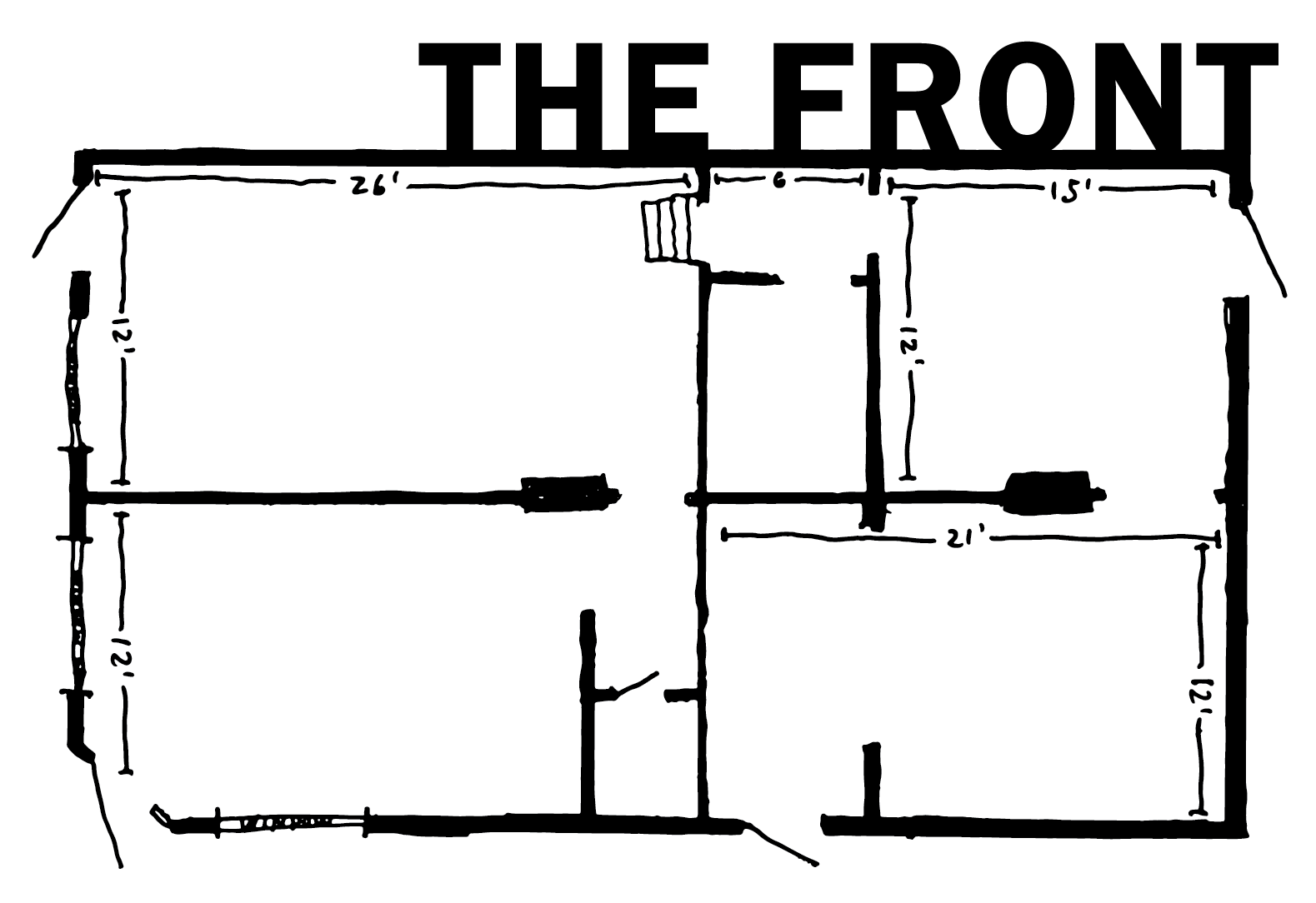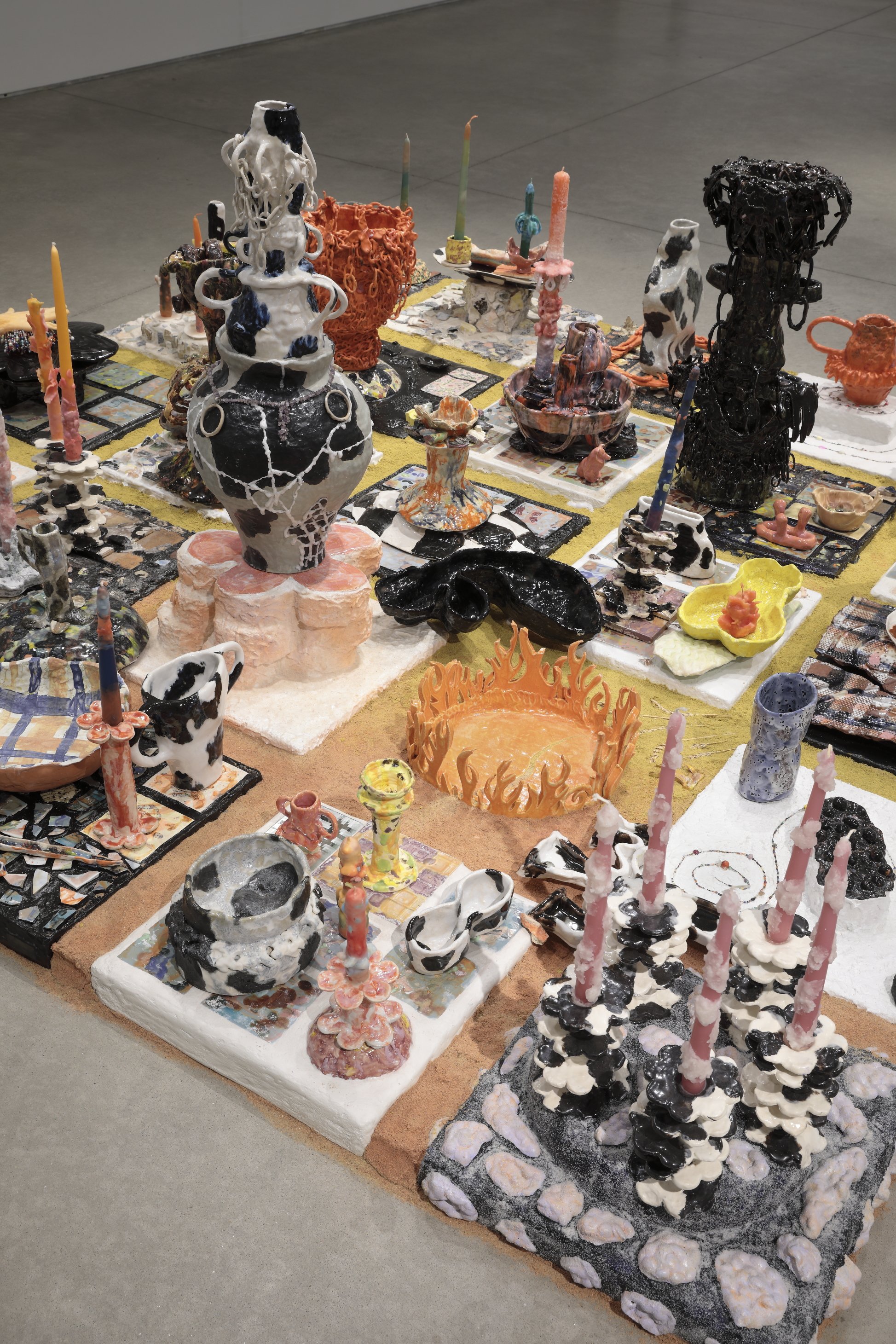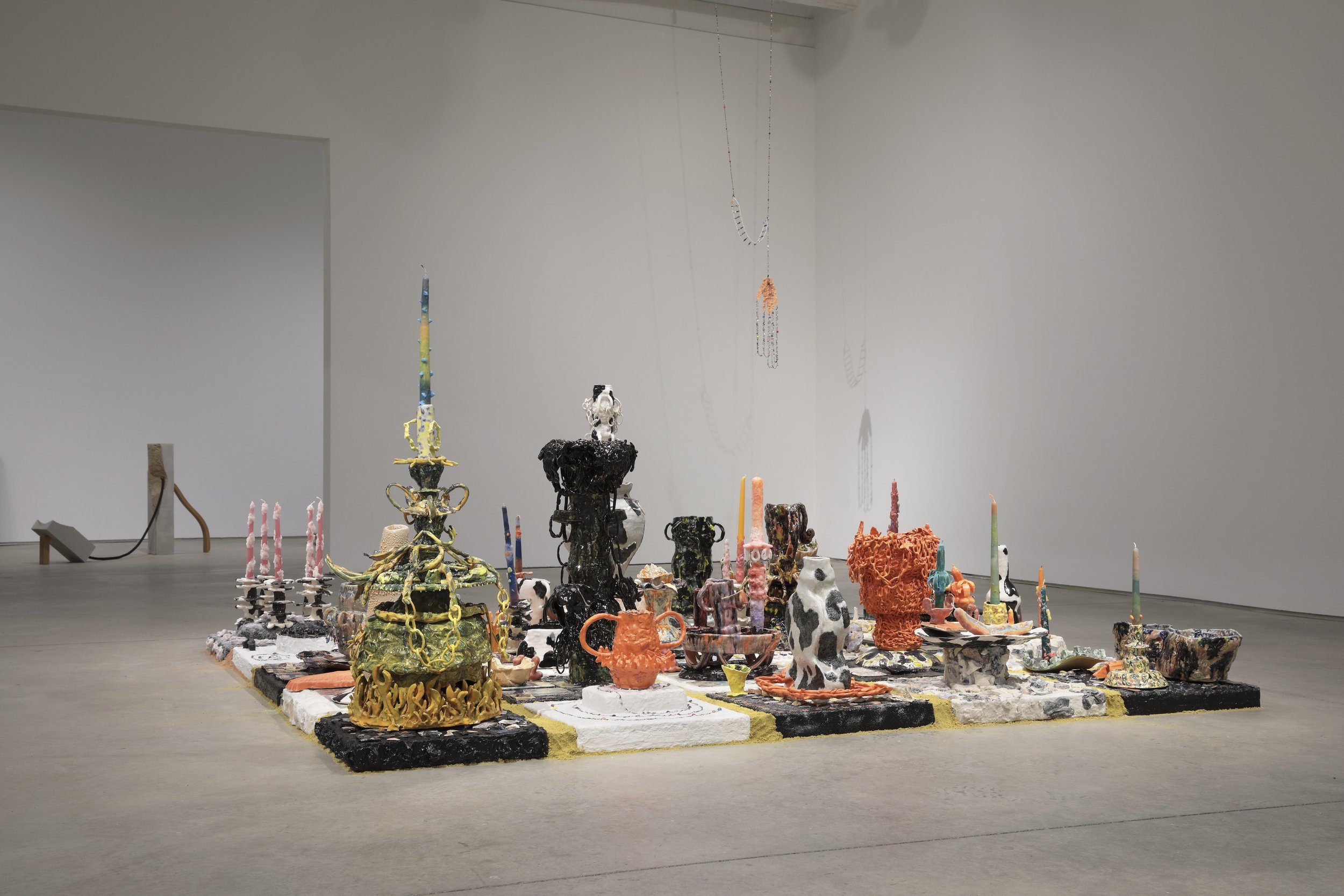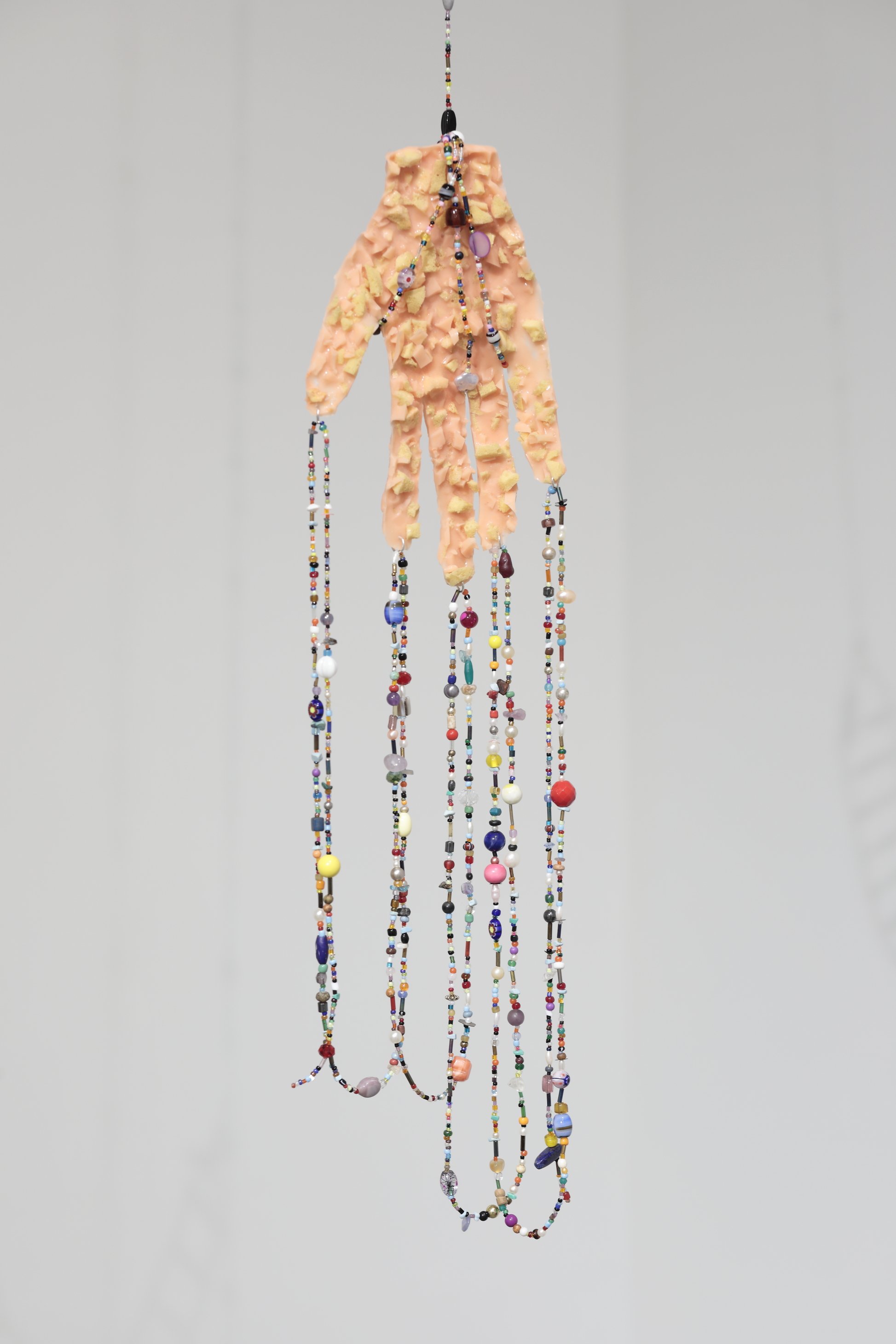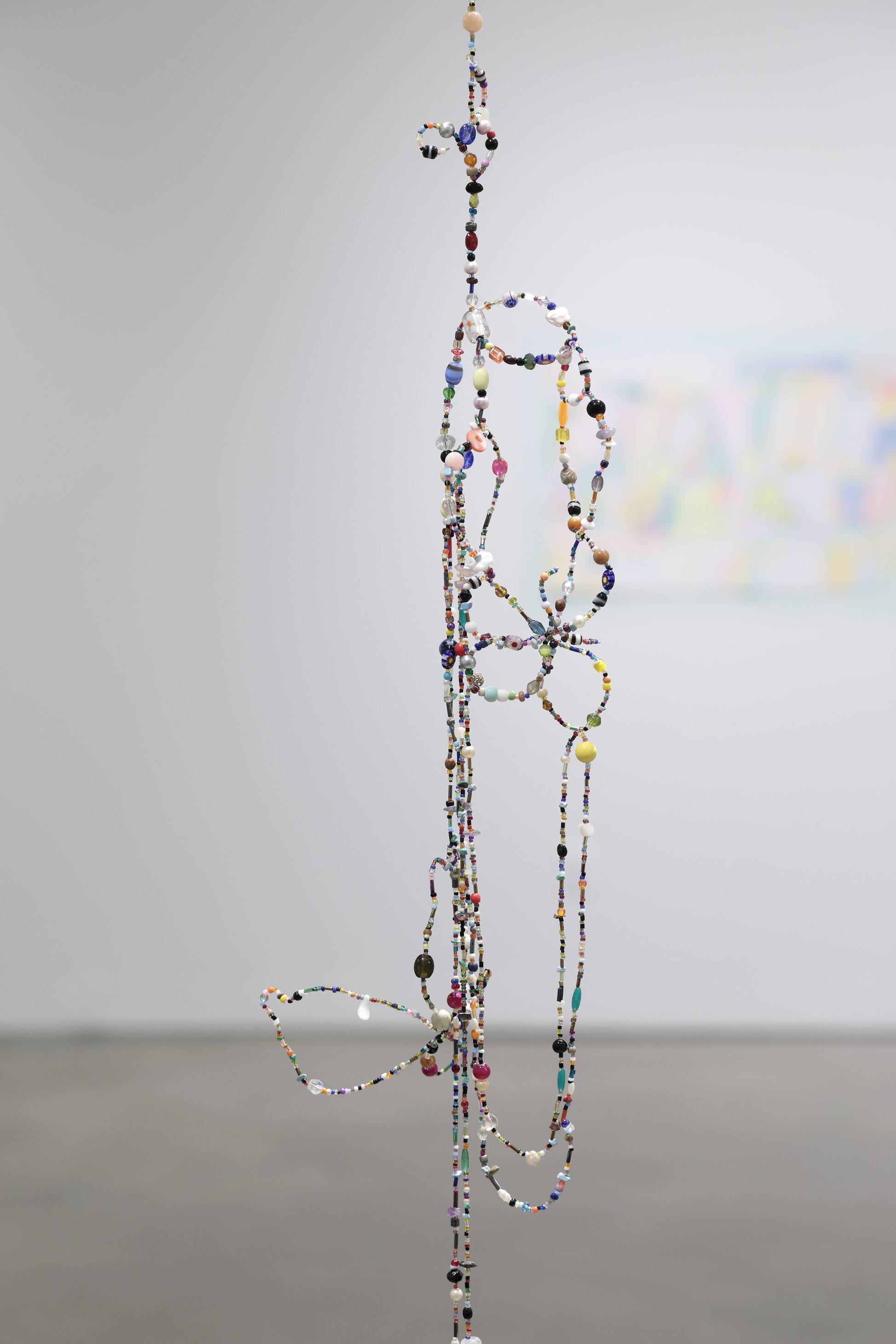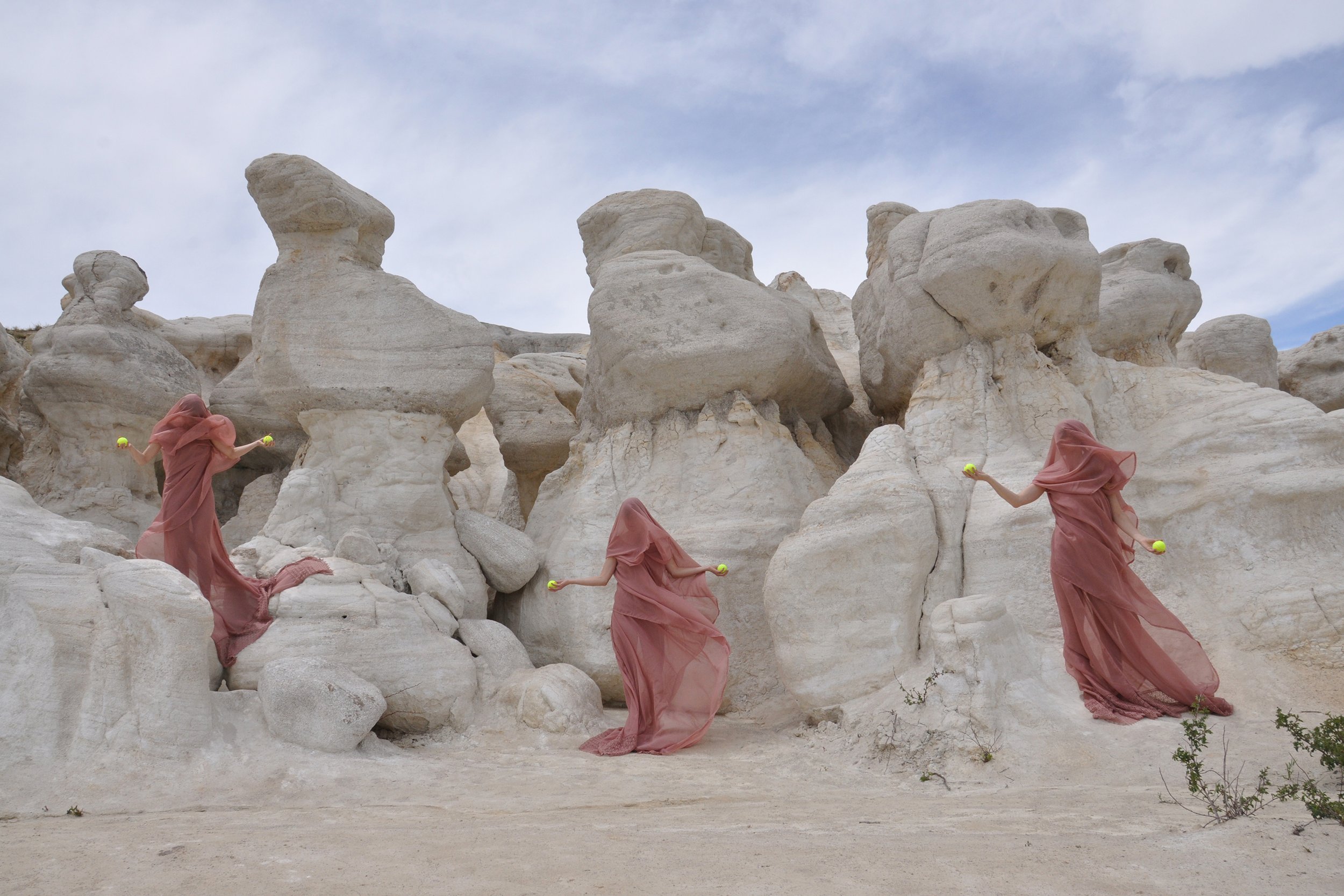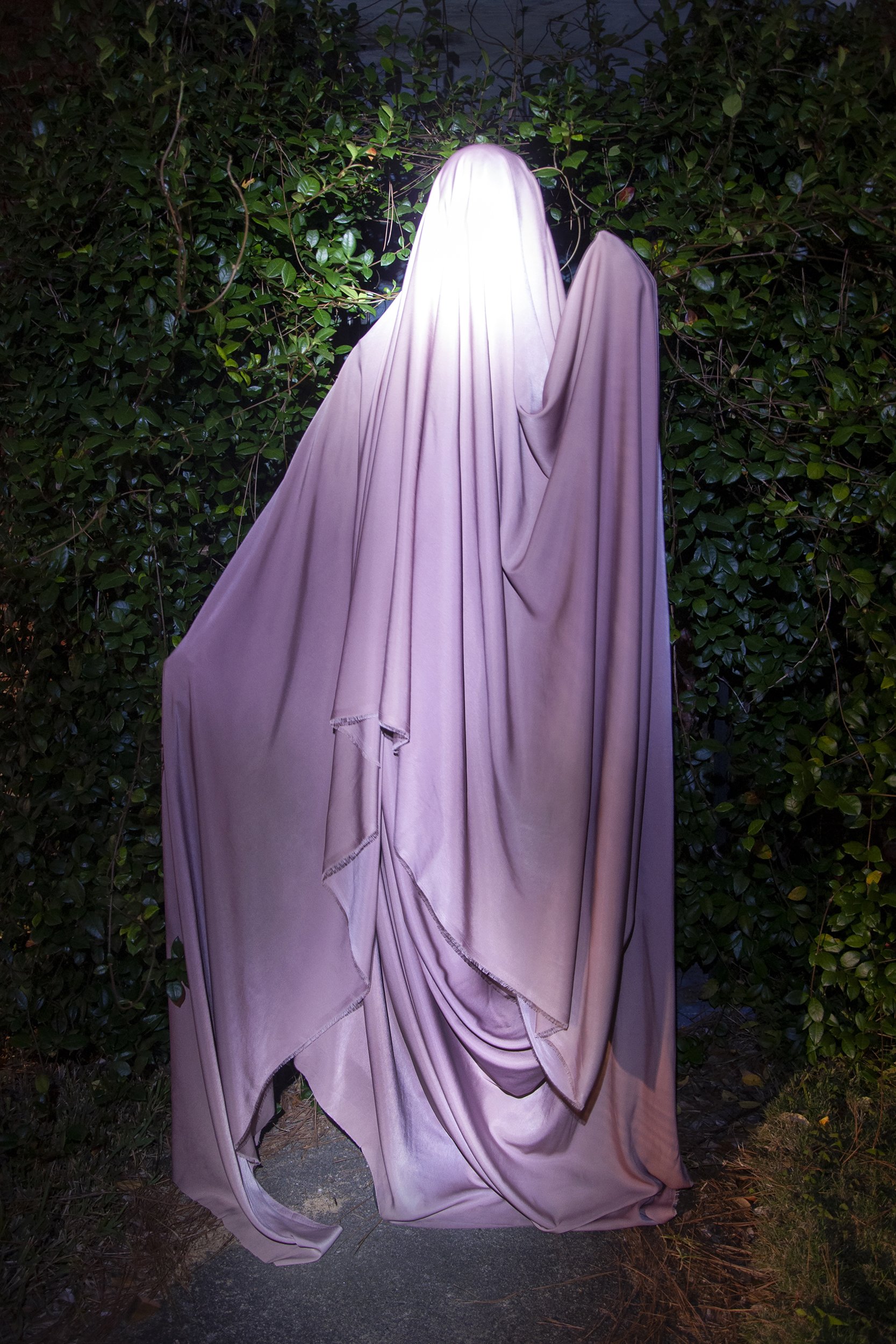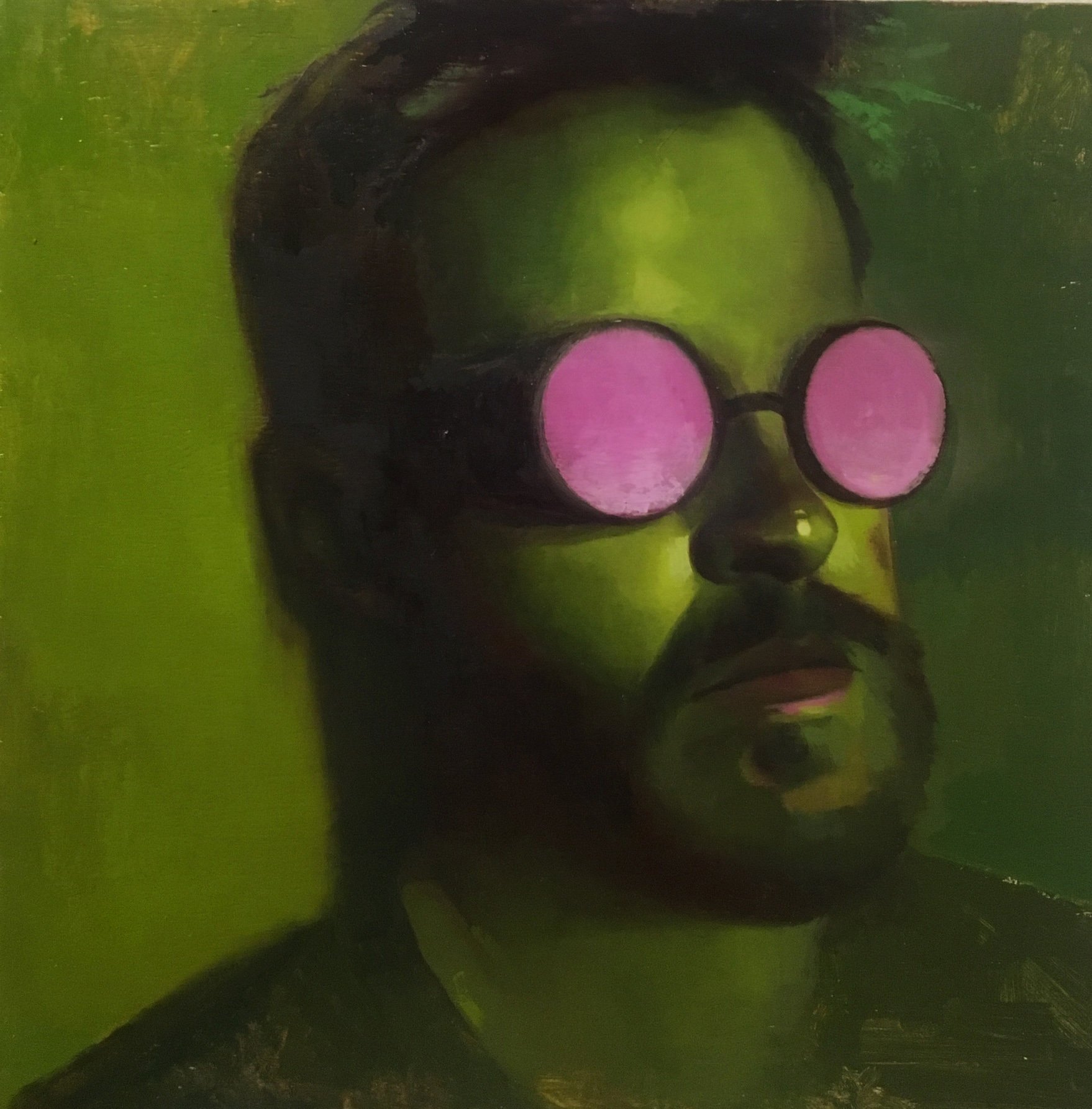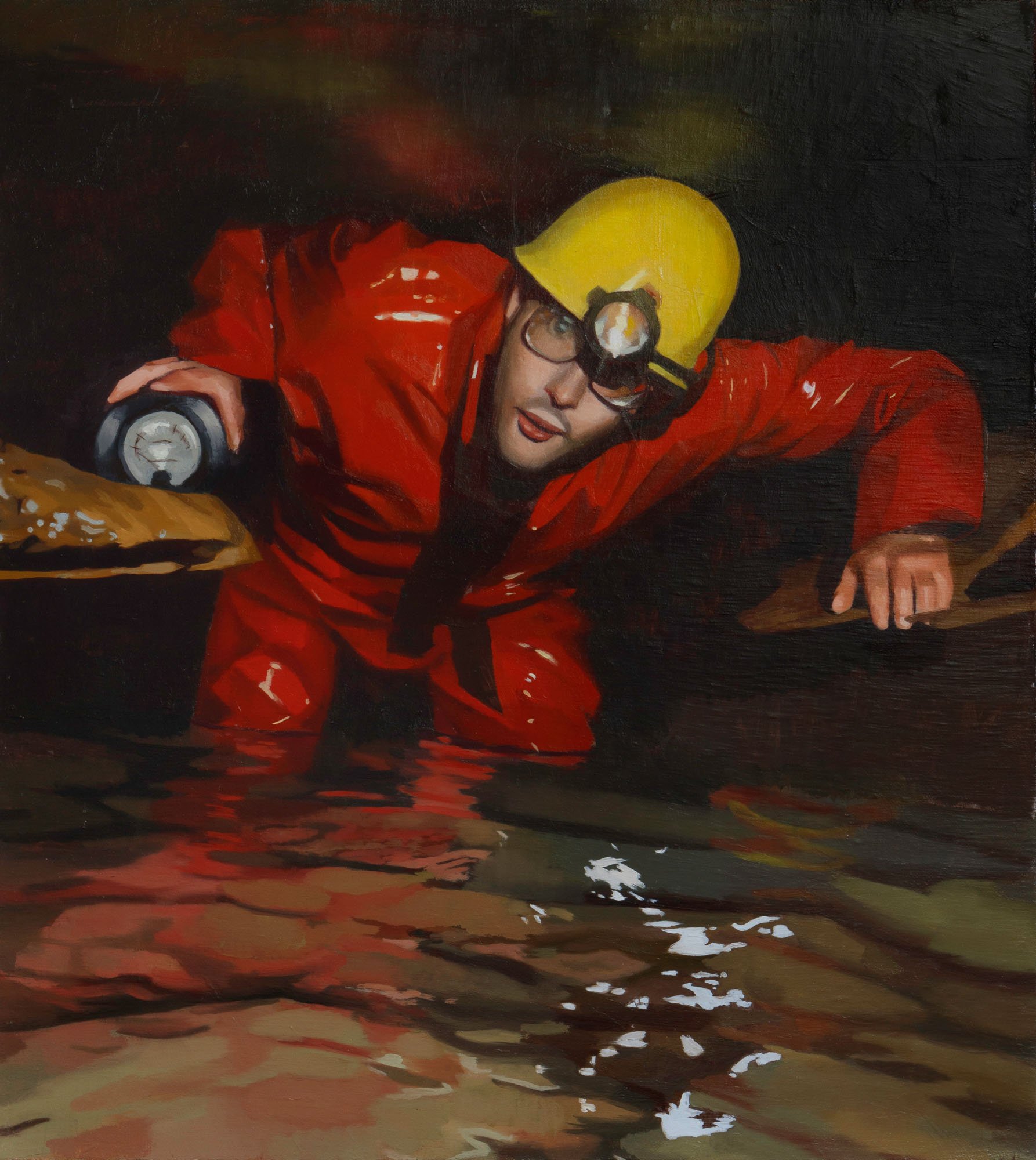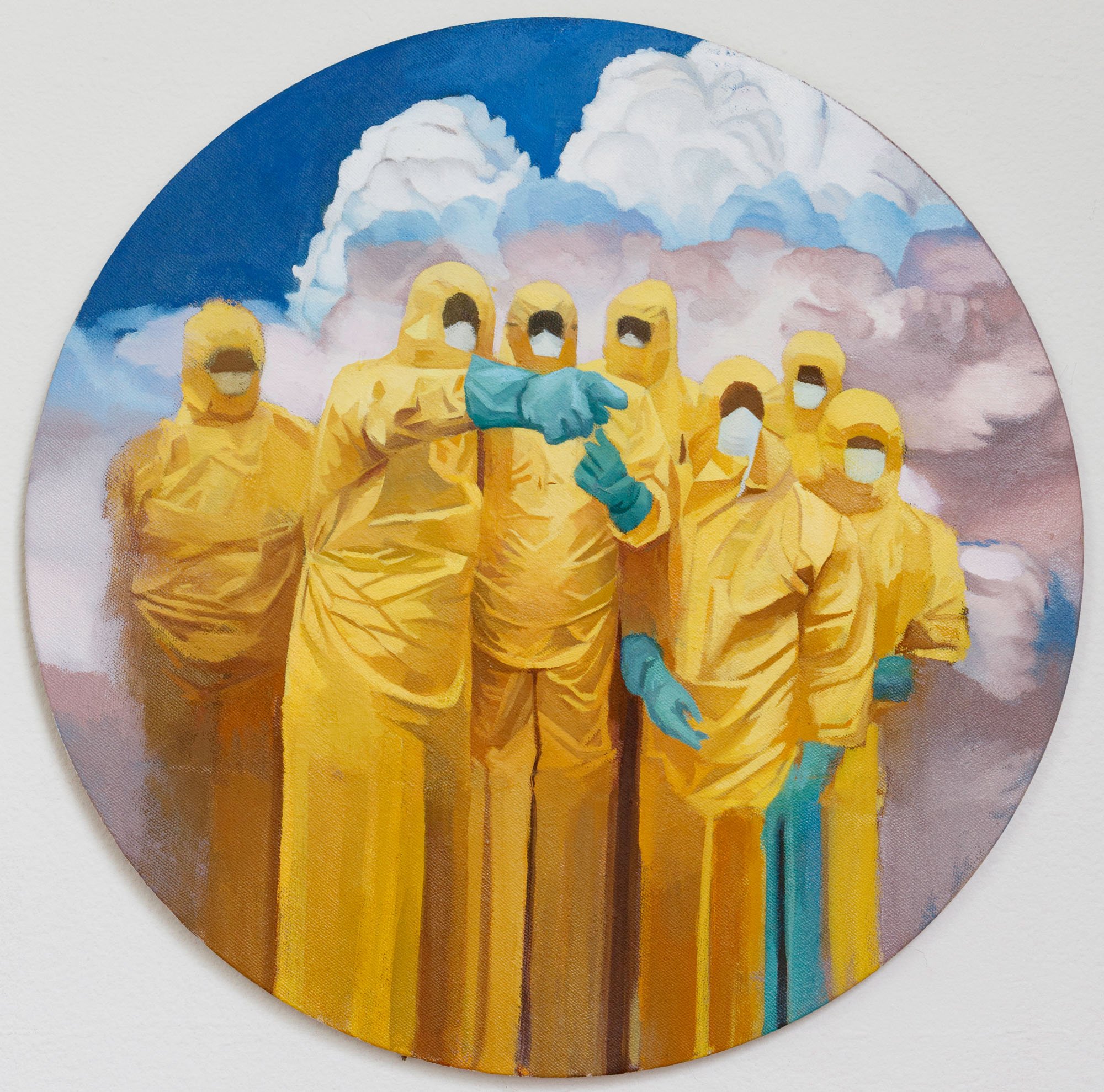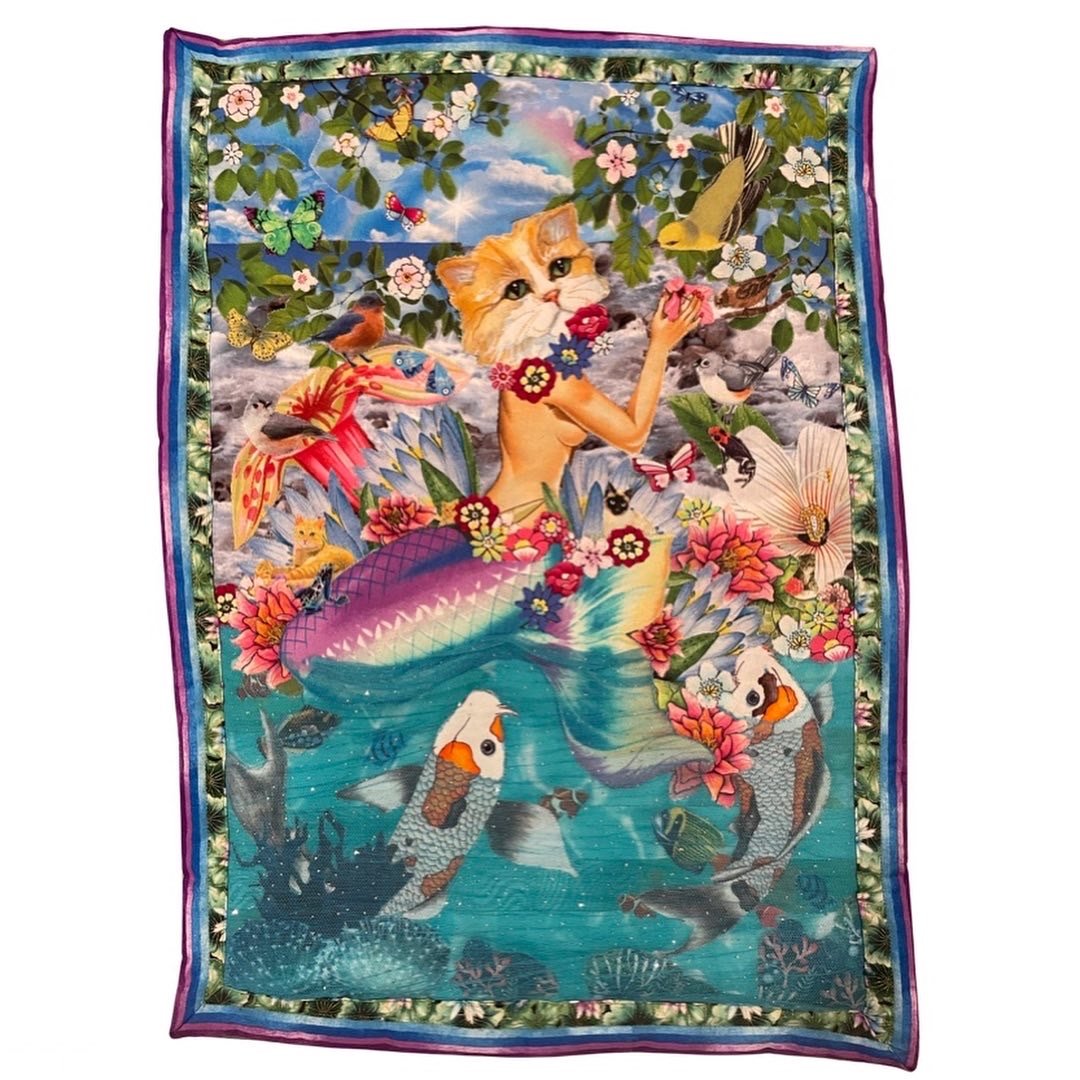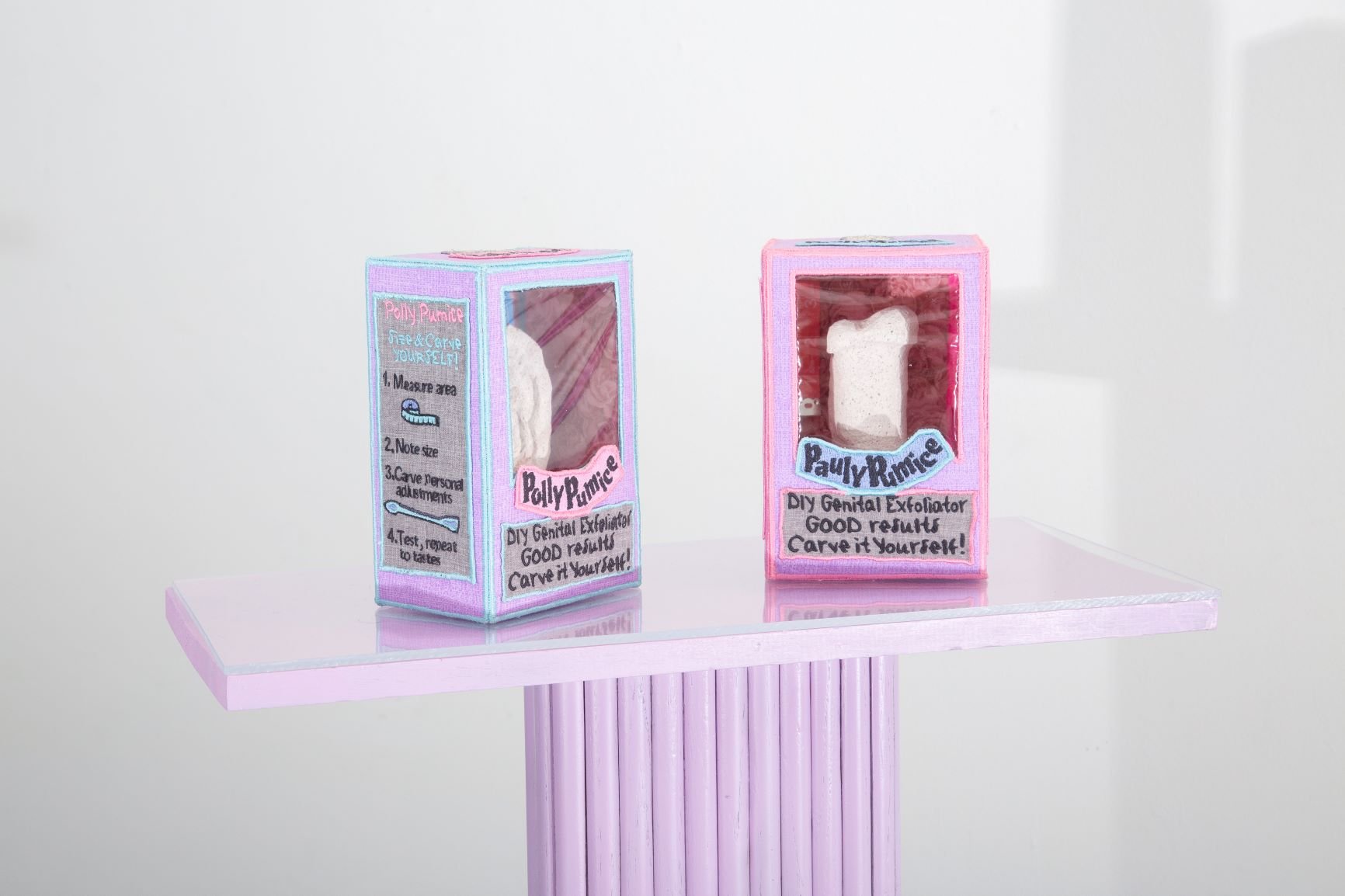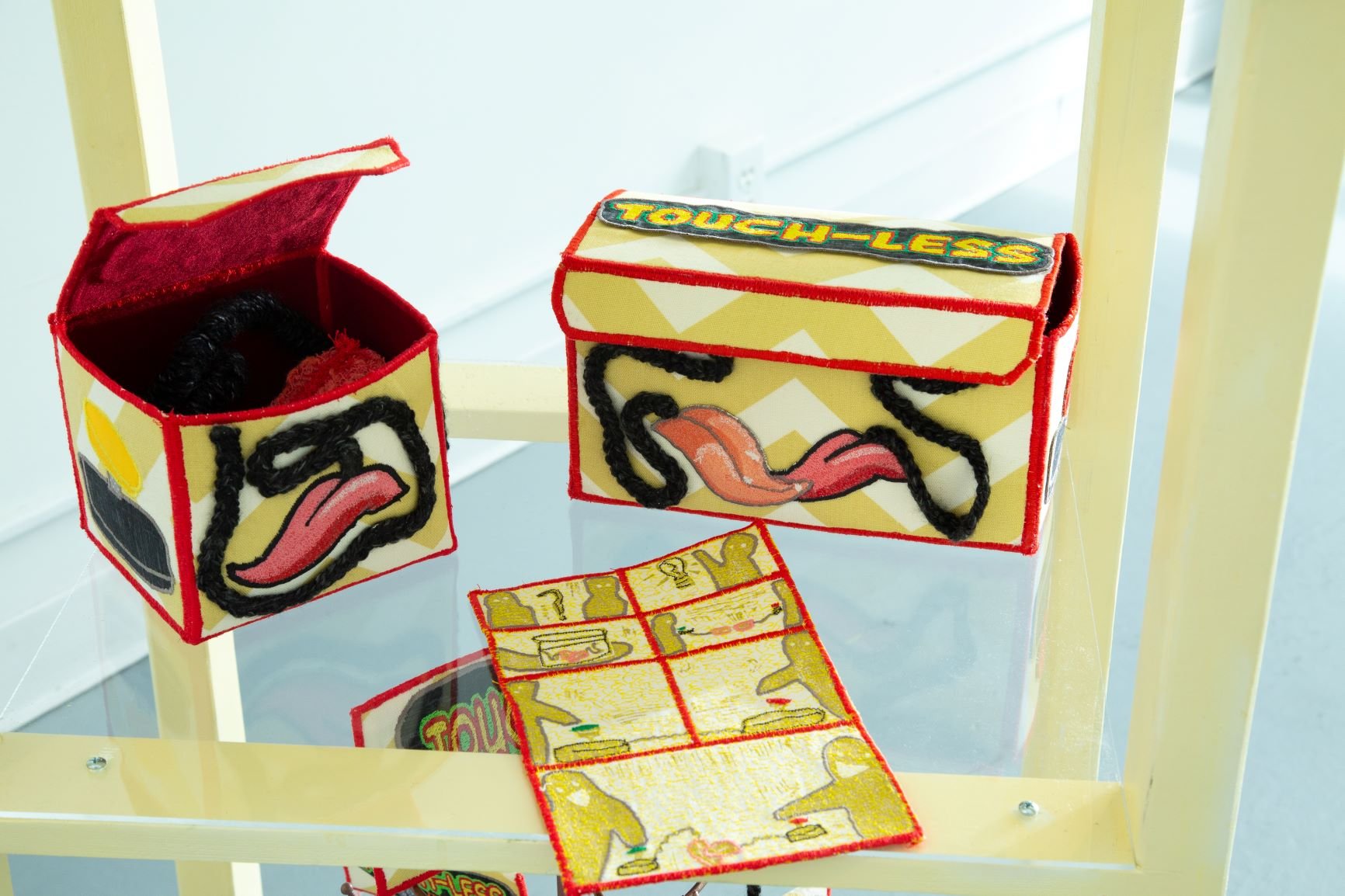GIVE NOLA DAY
EARLY GIVING STARTS APRIL 18TH, 2022
GIVE NOLA DAY ENDS TUESDAY MAY 3RD AT 11:59PM
The Front operates as a collective and is located in one of the largest artist-run arts districts in the country. With a new group of shows each month, the space consists of four unique galleries and acts as an incubator for artists to test new ideas, take risks, and offer talks, readings, screenings, and other programming free to the community. As a founding principle, the gallery takes no commission on art sales. All proceeds go directly to exhibiting artists.
Collective members volunteer their time and energy to operate every aspect of the space and pay monthly dues to cover basic expenses such as rent. Our supporters make it possible for us to put up a new show in every room each month, subsidize memberships, invite guests, arrange exchanges with other collectives, and provide space and programming opportunities to other organizations in our community.
April 9 - May 8, 2022
Opening Reception Second Saturday, April 9, from 6-10pm.
Gallery is open Saturdays and Sundays from 12-5pm
Be sure to check out The St. Claude Art Rag for more info on the Second Saturday Art Openings on St. Claude!
Programming This Month
Sunday, April 10th, 1pm: Artist Talk
Nicole Levaque, Companion Planting
Tuesday, April 12th: *doors: 6:30pm, show: 7pm
Rubber Flower Poetry Hour
Open mic night, with music by Chuck Perkins and Maya Pen
*Outside event only, please enter through the gate on Mazant St.
Saturday, April 30th, 12pm: Artist Talk
Jane Tardo, Adventure Cattery Quilt Show and Boutique
“Soft Things: talking about fiber art.” This artist talk will give an overview of different techniques, materials, and language used to talk about fiber art, with the aim of providing clarity on the medium for artists, audiences, collectors, professors, and art professionals.
Room 1
Nicole Levaque, Meadowsweet for Millstones, Glazed stoneware, mixed media, 44 x 92 x 92 inches, 2020.
Nicole Levaque, Meadowsweet for Millstones, Glazed stoneware, mixed media, 44 x 92 x 92 inches, 2020
Nicole Levaque, Through a Seedline, aluminum, beads, fishing line, dimensions variable, 2020.
Nicole Levaque, Through a Seedline, aluminum, beads, fishing line, dimensions variable, 2020.
Companion Planting
Nicole Levaque
Companion Planting is the next iteration of the works Meadowsweet for Millstones and Through a Seed line, an installation built around living with a body reliant on pharmaceuticals and matrilineal inheritance. Through visual world building I gain a control that I don’t have in my own body.
I see the ceramic process intrinsically tied to letting go to a power greater than myself. I'm drawn to synthetic materiality through the constant impulse to consume through thrifting, collecting, and hoarding. My process is rooted in the trial and errors of making and accumulation. I embrace the breakdown and failure of objects and my own hand, often reworking broken pieces or building upon finished works until they make a new whole. It’s a whole that feels ready according to an internal logic and aesthetic but could be changed in a day or year from now. I am interested in the role of fate and chance, how a loose grip or an accidental bump leads down a new path. By reworking past works into new forms and installations, I am able to process new mental and physical states through touch, seeing beauty in the memory that clay holds.
Nicole Levaque (b. 1991) is a settler Canadian artist, currently based in Hamilton, Ontario. Levaque works through sculptural installations and ceramics to address hierarchies of consumption, chronic pain, and her emotional attachment to objects. She uses ceramics for its familiarity rooted in touch and the immediacy of its materiality. Each vessel is handbuilt, precarious in the interpretation of usefulness and function. Embracing failure and intuitive making is central to her work.
Levaque holds an MFA in Sculpture and Extended Media from Virginia Commonwealth University (2019) and a BFA in Painting from Concordia University Montreal, Quebec (2014). Most recently, Levaque is a 2021 recipient of a Canada Council Research and Creation grant. Levaque has been an artist in residence at the Visual Arts Centre of Richmond (Richmond, Virginia), Mildred’s Lane (Narrowsburg, New York), SIM (Reykjavik, Iceland), Von (Cuernavaca, Mexico) and held the Sculpture Practicum position at The Banff Center (Banff, Alberta) in 2016. She is a founding member of the former studio collective and project space Casino, (Hamilton, Ontario). Her work has been exhibited and collected locally and internationally, including at the True Luck Gallery, Anderson Gallery, Spriten Kunsthall, York University and Guadalarjara90210.
Room 2
Ryn Wilson, Oneiromancy, archival pigment print, 24 x 36 inches, 2021
Ryn Wilson, in somnis veritas, archival pigment print, 24 x 36 inches, 2022
Ryn Wilson, Harbinger, archival pigment print, 16 x 24 inches, 2022
Laura Velez, Deafening Sound, Oil on Panel, 12 x 12 inches, 2019
Laura Velez, Looking North, Oil on linen , 16 x 18 inches, 2020
Laura Velez, The Seekers, Oil on Canvas, 16 inches Round, 2020
Portent
Laura Velez and Ryn Wilson
Portent is a two-person exhibition of paintings by Laura Velez and photographs by Ryn Wilson. Its title, chosen by the artists, reflects their fascination with signs or warnings that signal an event, especially something momentous or calamitous, that is likely to happen. Velez and Wilson’s processes share an affinity, but their visions and imagery are unique. The compelling and complementary nature of the formal and symbolic qualities are reflected in Portent, where these ominous works can be seen side-by-side.
Laura Velez’s images are inspired by an imagined hopeful vision for a world post apocalypse. The figures in Hazmat suits represent humanity reemerging from underground and embracing their new environment. The bright colors of this world represent the toxicity of the landscape. She conveys a sense of beauty in this space to remind us of human perseverance. Velez replicates images of highly chromatic plastic hazmat suits, plastic gloves, and trash bags. She paints these unnatural materials in a way that makes them enticing. The plasticity of the form is tangible, every fold is painted with a sense of sensuality, and highlights feel like icing on a cake. When looking at these images she encourages us to see beauty in the synthetic material. This has the effect of making a world that could be feared, appealing. Yet we can’t see the people in the suits. With attention to the materials, the faces, and the reaction of the people in the suits are left to our imaginations. The figures may seem happy one moment in their new world and lost in the next.
Ryn Wilson’s photographs are of scenes that move from a familiar space into a dream world. In each image she has curated a scene that has a familiarity which disarms us enough to feel grounded. As we let our guard down, we enter a surreal space. The scenes are primarily outside with textile placement that guides us through the image. Each photograph contains a figure, covered in fabric, which confronts the viewer. Almost with their own life, they navigate us throughout her compositions. The fabric has a texture associated with comfort and sensuality and the colors feel like skin tones or colors from nature. The fabric, even more than the figures, can be our guide as it directs us towards mirrors, or windows into other worlds. For the artist, the shrouded silhouettes came from a dream she had. She saw a group of them holding tennis balls in a rocky landscape and was compelled to recreate her vision. These characters are guides, or possibly wise deities, that hold potent knowledge. Like omens, there is no singular message from these images or her figures. They provide signs but not answers.
When together, Wilson and Velez’s images present a compelling narrative. There is contrast between the soft fabrics and brittle plastic, the neutral calm colors, and the vibrant acidic ones. At times the shrouded figures are deities reminding us of the wisdom of the natural world, while the hazmat suited figures are a warning about embracing the synthetic. Or perhaps the hazmat figures are showing us how to embrace the future and the shrouded figures are an emblem of the past. These artists invite us to imagine and inhabit the realms of dreams touched by beauty and hopeful escapism.
Laura Denisse Velez was born in Calgary, Alberta, Canada. When she was three years old her parents and siblings relocated to Luling, Louisiana. Velez received her BFA from Louisiana Tech University 2005 and her MFA from the Pennsylvania Academy of Fine Arts in 2007. During her thirteen years in Philadelphia, Laura worked for the Philadelphia Mural Arts Program and the Philadelphia Museum of Art. Velez has been featured in many shows in Philadelphia and the surrounding areas including a solo exhibition at Cabrini College in 2011 titled Permission in Radnor, PA.
Velez is married to artist Thomas Walton and currently lives, works, and has an active studio practice in New Orleans, LA.
@ldvlz
http://www.lauradenissevelez.com
Ryn Wilson is a photography and video artist working in New Orleans. She creates cinematic narratives with an emphasis on feminism, mythology, and the environment. She grew up in Wisconsin, receiving her BFA in photography from the University of Wisconsin-Milwaukee in 2006 and her MFA in photography and video from the University of New Orleans in 2013. Before landing in New Orleans, she resided in Tokyo, Bangkok, Hamburg, and Shanghai, where she assisted the Chinese photographer, Maleonn. Ryn was a member of the artist-run gallery, The Front, from 2014-2019 where she exhibited, curated, and organized an annual short film festival. In 2018, Ryn co-founded the Crystal Efemmes, a quartet of interdisciplinary artists that create immersive installations retelling myths and histories from a perspective that honors marginalized populations. In 2021, she opened the Wading Room with Peter Hoffman, a six-month art gallery project. Ryn’s work has been featured at the Ford Foundation Gallery in NYC, the New Orleans Museum of Art, the Contemporary Arts Center New Orleans, Kunsthall Stavanger in Norway, and the Oslo International Video Art Festival. Her work was featured in Burnaway Magazine as one of their best exhibitions of 2015. She has received funding from the Foundation for Contemporary arts and the Jazz & Heritage Foundation. Ryn currently works as a costume designer and seamstress for film, performance, and fashion.
Room 3
Anna Ridler and Caroline Sinders, Cyprus Trees, Size and Media Varies.
Cypress Trees, a beginning
Anna Ridler and Caroline Sinders
How can AI help us to face the climate crisis and other entwined challenges? This machine-learn- ing-generated moving image piece gives insights into the complexity of data sets and raises ques- tions about deforestation and the politics of cli- mate change, memory and loss. Anna Ridler and Caroline Sinders created a special dataset of the Bald Cypress on the gulf coast of the USA, where both have family ties. These trees, which can live thousands of years, are currently considered to be “threatened” by climate change.
This project, commissioned by Ars Electronica , is very much about machine learning’s impacts and ecological footprint. As part of this commission, which is a collaboration between Anna Ridler and Caroline Sinders, we will be exploring deforestation and the politics of climate change, memory and loss through a multi-media project. We are in a climate crisis that is entwined with a series of other crises. In this project, we are pulling out the expectations, histories, traces and contexts that AI has within this. For example, there has long been a collaboration between big tech, specifically machine learning, and big oil (some of the earliest test cases for deep learning have been in the oil industries; there is ongoing debate amongst technology companies as to how involved they should be in fossil fuels). By bringing back this history out, we want to emphasise the socio-technical powers that AI has emerged from.
A large part of the project has been building a dataset of a specific type of tree, the Bald Cypress, often considered to be a symbol of the swamps in the American South, which would then be used to create a machine learning generated moving image piece. Bald Cypresses are trees that can live thousands of years (the oldest in North Carolina is believed to be over 2,600 years old) but are currently considered ‘threatened’. There’s a difficulty in building a dataset, but this difficulty is poetically urgent and necessary in documenting and creating data about these types of trees which are at risk. By recording it as much as we can - this can play into a wider conversation about what ends up in datasets are things that are easy to find, and how this becomes the norm. As artists, we both measure and take stock of how much work, research, ephemera goes into our practice, and we've tried to make those processes readable to others. In this case, we keep returning to the 'cost' of tech based art- the cost in terms of labor, black boxes, and environmental impact. Can AI be sustainable, and how? It has the potential to do a great amount of good but also great harm in society- we hope to make visible these hidden costs in our work and a better way of working to be found.
the video piece: "Fragments: 30.2051° N, 90.1121° W"
The artists have used this dataset to train a GAN to reflect on what these areas might be like in the future, with and without the trees. The GIF is generated with this model and is controlled by some of the weather data generated by the most recent hurricane in the area, Hurricane Ida.
Anna Ridler (UK) is an artist and researcher. She has exhibited at institutions such as the V&A Museum, Ars Electronica, HeK Basel, Impakt and the Barbican Centre and has degrees from the Royal College of Art, Oxford University and University of Arts London. She was a 2018 EMAP fellow and was listed by Artnet as one of nine “pioneering artists” exploring AI’s creative potential. She is interested in working with collections of information, particularly self-generated data sets, to create new and unusual narratives in a variety of mediums, and what happens when things cannot fit into discrete categories. She is currently interested in the intersection of machine learning and nature and what we can learn from history.
http://annaridler.com/
Caroline Sinders (US) is a machine learning researcher and artist obsessed with language, culture and images. Her work explores the intersections between natural language processing, artificial intelligence, abuse, online harassment, and politics in digital, conversational spaces. Her work has been featured in the Victoria and Albert Museum, MoMA Ps1, the Modern Art Museum of Bologna, Ars Electronica, as well as others. She is the founder of Convocation Design + Research, an agency focusing on the use of machine learning and design for public good.
https://carolinesinders.com/
Room 4
Jane Tardo, Cat Island Adventure, textiles, 60 x 54 inches, 2021.
Jane Tardo, Mercat-Girlfriend, textiles, 14 X 19 inches, 2022.
Jane Tardo, Polly and Pauly Pumice, textiles, machine embroidery, pumice stone, found objects, 5.5 X 8 X 3.5 inches, 2019-2020.
Jane Tardo, Touch-Less, textiles, machine embroidery, electronics, mixed media, Installation size: 24 X 42 X 18 inches, 2018-2020.
Adventure Cattery Quilt Show and Boutique
Jane Tardo
Jane Tardo’s work is a handmade exploration of alternative approaches to life created through their projects as an inventor, sculptor, and designer. Their work brings ever joyful solutions to daily troubles and creates absurd leisure activities to prompt reflection on the seams of reality and fantasy. Dream-like and unrestrained, Tardo’s Adventure Cattery Quilt Show and Boutique captures a fantasy world inspired by the perplexity of meaning and the ludicrousness of reality.
The utopic Adventure Cattery Quilt Show is a series of textile tapestries. Using applique, collage, and quilting techniques, this work centers around hope, companionship, the love of cats and nature. They are the ultimate, flowery, surreal fantasy escapist relationships with the people we want to be, the places we want to go, the days that aren’t too hot or too cold, where flowers are always in bloom, and there are no biting bugs.
Boutique prioritizes research and process. Tardo’s interactive, sculptural installation analyzes how trends, modern marketing, social media, and algorithms manipulate a perspective to the benefit of controlling the masses. In intricate sewn and machine embroidered packages, control is reclaimed with hands-on, persuasive communication and fool-proof branding techniques. Mimicking the promotional language, graphic style and overt optimism of modern marketing, the objects tune into what we are conditioned to want: products to help with intimacy, beauty, and control.
Jane Tardo is a fiber and mixed media artist born and based in New Orleans. Experimenting with many visual and physical techniques, their practice is surreal, wacky and diverse- incorporating sculpture, textile art, and technologies in both two-dimensional and three-dimensional works.
Tardo’s work has been exhibited both locally and nationally. In January 2022, they were awarded 2nd prize for Cat Island Adventure in Surreal Salon 14 at Baton Rouge Gallery. In October 2021, they showcased a mobile interactive performance installation: Haunted Hearse Snake Tube Adventure Ride. Tardo earned their MFA in Sculpture from the University of New Orleans in 2020. They served as a digital resident at Southern Heat Exchange and was a grant recipient of Colloqate Design. Their work has been written about in Antigravity Magazine, The Art Newspaper, Art News, and Pelican Bomb.
